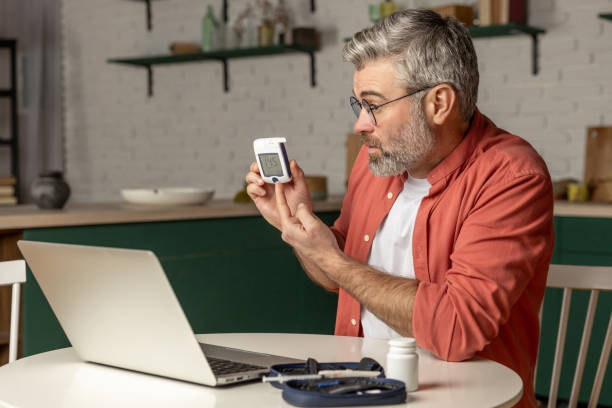Tenovi Fast Facts About Remote Patient Monitoring is a succinct, engaging way to advance your knowledge on various telehealth and RPM statistics and topics. This week’s 21 RPM statistics and facts are derived from studies and articles ranging from RPM history to benefits.
21 Remote Patient Monitoring Statistics and Facts
All fast facts draw from various published sources and are frequently updated as new data becomes available. Below is a sampling of 21 RPM fast facts to help spark conversation surrounding remote patient monitoring solutions.
RPM Fact #1:
Breaking Barriers provided remote monitoring equipment to 780 patients in Chronic Care Management. Since the program began, 98% reported feeling more in control of their illness, and 32% improved medication adherence.
RPM Fact #2:
by The Ohio State University Wexner Medical Center found that while many Americans use a device to monitor their heart, few share that data with their doctor.
RPM Fact #3:
In fall 2024, ADS partnered with StrideMD to launch StrideForward, a remote patient monitoring program. The initial phase included 500 ADS clients, capturing 1.5M+ CGM readings. Results showed a 4.2% drop in average glucose and an 11% increase in time-in-range, signaling potential cost savings.
RPM Fact #4:
The Department of Health & Human Services (HHS GOV) says remote patient monitoring pairs well with telehealth when patients must be monitored for certain health conditions. Additionally, RPM can prevent health complications in patients who cannot easily travel.
RPM Fact #5:
Second, in the late 1970s, Kaiser Foundation International and Lockheed Missiles and Space Company developed a remote monitoring system. The pilot program was introduced to a rural region lacking medical services.
RPM Fact #6:
Paul Viskovich, CEO of Healthfully believes that “remote patient monitoring devices that are connected via the Internet of Things (IoT) are the future.”
RPM Fact #7:
England’s health and social care secretary Matt Hancock said, “The digital revolution within the health service was underway long before COVID-19, with the NHS Long Term Plan setting out an ambition for greater use of connected home-based and wearable monitoring equipment, combined with apps, software and data.”
RPM Fact #8:
McKinsey & Co. stated that current healthcare spending of roughly $250 billion can be virtualized to become cost-efficient.
RPM Fact #9:
RPM and AI reduce the chances of errors and reduce the communication gap between doctor and patient. The Hospitalist reported that, “Physicians who rank poorly in their communication skills with patients were associated with reduced rates of medication adherence.”
RPM Fact #10:
Insider Intelligence reported that, “Providers and patients are bullish on using technology to manage their conditions.” Therefore, health systems are using more RPM programs while investors are pouring money into RPM-focused technology.
RPM Fact #11:
More than 42% of U.S. adults are considered obese. Dr. Katherine H. Saunders suggests significantly expanding healthcare access with telehealth consultations and remote patient monitoring. Another key point is that enhancing providers’ access to data and continuing education could also help.
RPM Fact #12:
Telehealth grant programs promote and advance telehealth services in rural areas. With this in mind, the Health Resources and Services Administration lists several grant programs focused on funding rural telehealth projects.
RPM Fact #13:
The Pittsburgh health system (UPMC) uses RPM devices including scales, blood pressure cuffs, and pulse oximeters. 76% of their patients were less likely to be readmitted to the hospital. Moreover, patient satisfaction and compliance was over 90%.
RPM Fact #14:
DR. RAJ S., CARDIOLOGIST (SCL Health) reported one of his patients who kept passing out had seen multiple physicians. He prescribed a remote monitoring device. Within two months RPM detected a rhythm that was cured for life. As a result, the patient reported it had ‘changed my life.’ He said that traditional methods did not pick it up, but with newer technology “we were able to really impact her life.”
RPM Fact #15:
Rep. Frank Pallone, D-NJ, chairman of the House Energy and Commerce Committee, said: “Telehealth has been shown to be a convenient and safe way for people to access many types of services when they cannot see their provider in person.”
RPM Fact #16:
Likewise, according to data published by the CDC in October 2022, approximately 37% of adults used telemedicine in the past 12 months.
RPM Fact #17:
CoachCare, a remote patient monitoring and virtual health company, and CareSpan Health provide medically-assisted remote patient monitoring (RPM) to over 2,000 patients annually.
RPM Fact #18:
Virginia University Commonwealth Health is using RPM for patients with diseases such as sepsis, congestive heart failure and pneumonia. 10% of the patient population is expected to take part.
RPM Fact #19:
An MD Revolution survey reports that 46% of healthcare c-suites expected to increase their remote patient management budget in 2024. Another 46% expect to maintain their current level of spending. While only 7% of respondents plan to reduce spending on remote patient monitoring.
RPM Fast Fact #20
Ophelia, digital provider of medication-assisted treatment (MAT) for Opioid use disorder reported in a recent study that 56.4% of Ophelia’s patients remained in treatment for six months, and 48.3% remained for one year.
RPM Fast Fact #21
A telemedicine vs. in-person primary care study of 2,357,598 primary care visits saw just over half (50.8%) utilized telemedicine, including just under 20% video visits and 31.3% telephone visits. Results showed that medication prescriptions were lower in video (38.4%) and telephone (34.6%) visits than in-person visits (46.8%).
Tenovi publishes monthly fast facts on our blog for a quick and easy way to enhance your knowledge of current facts and statistics about telemedicine and remote patient monitoring.


